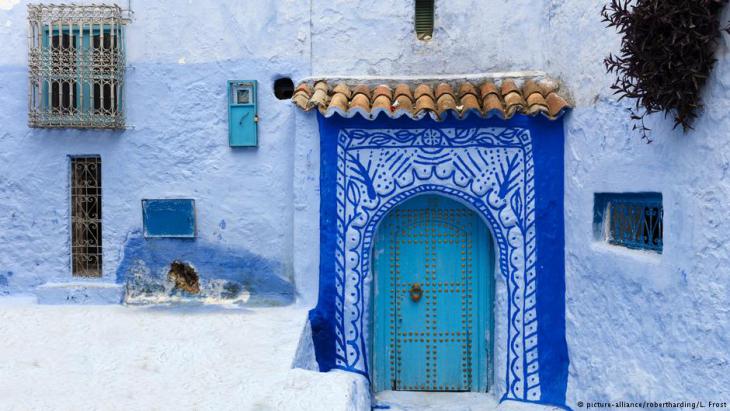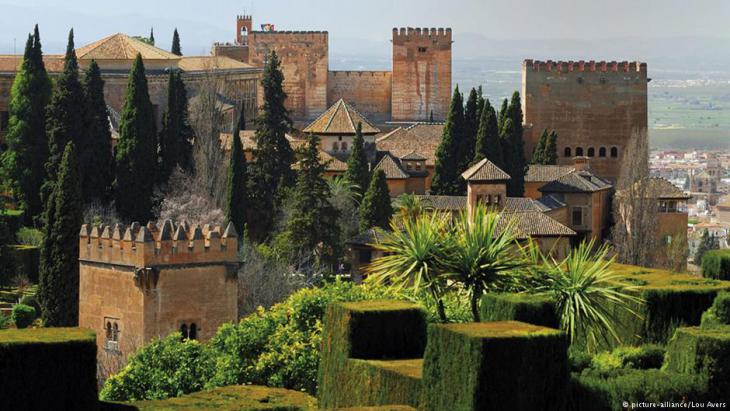Andalusia begins in northern Morocco

In the narrow and shady alleyways of the white medinas (Arabic for "old town") of Morocco; in the hidden valleys and gorges of the rugged Rif mountains, where far away from the hectic tourist spots vibrant markets and folk festivals are held just as they were 100 years ago and more; where hidden ruins, forgotten and rarely visited by foreigners, bear witness to Mediterranean tribes – Phoenicians, Carthaginians, Romans and Arabs – that arrived as conquerors but assimilated with the obdurate mountain people or had to move on; where the legendary Rif Kabyle leader Abd el-Krim el-Khatabi taught Spanish and French colonial troops the real meaning of fear in a five-year guerrilla war in the first half of the 20th century – it is that here the spirit of the ancient combative Al-Andalus lives on. This is because most of the displaced Andalusian refugees, around two million Muslims and Jews, driven from their homes by the Catholic kings, found acceptance and a homeland in northern Morocco. Many Moroccans are well aware of their Andalusian – European – origins.
Morocco's Andalusian gems
But it is first and foremost the two cities Tetouan and Chefchaouen, Morocco's Andalusian gems, which allow us to gain a sense of Andalusian ways of life, in fact even to experience them to a certain extent. The mediaeval ambience and the good fortune – one always vaunted by the Arabs – of an existence far from the constraints of time, have endured here for five hundred years. Tetouan and Chefchaouen, undoubtedly daughters of the city of Granada, are especially proud of their Andalusian past.

As early as 1430, the first refugees from Mortil, Baza, Ronda, Loja and Granada, led by a general by the name of Abd ul-Hassan Sli al-Mandari, settled in Tetouan, where they agreed to build their abode from scratch – drawn by the landscape, which reminded them of Granada. Jewish refugees from Al-Andalus then settled next to the medina – a Tetouan neighbourhood known as Mellah (Jewish quarter) dates back to this time.
It was 1501 when the main contingent of Andalusian emigrants finally arrived in Tetouan from Granada; previously, in 1471, displaced Andalusians had founded the city of Chefchaouen, situated some 50 kilometres southeast of Tetouan. Although some moved on into Algeria and Tunisia, the majority of Andalusian refugees, dedicating themselves to the lucrative piracy business in the 17th and 18th centuries, remained stranded in northern Morocco to construct their own Al-Andalus in exile.
Tetouan – arguably the most beautiful city in Africa
They transplanted Andalusian artistry, beauty of form and colour, as well as the Andalusian-Mediterranean charm of their lifestyle, to Tetouan and surrounded the city with a mighty wall – to this day, the Andalusian Old Town of Tetouan with its seven gates is arguably the most beautiful city in Africa, first afforded city rights as early as the year 961 by the Caliph of Cordoba.
Over the course of its 500-year history Tetouan has been able to maintain its Moorish-Spanish character, and more than that: in the heart of all northern Moroccans resides an Andalusian soul. This is manifested not only in the cobalt blue faience – in the opulent ceramic tiles designed with artistic finesse – found in the interior courtyards, mosques, public baths, tea houses, parks, gardens, fountain surrounds and grand houses of Tetouan, but also in Andalusian music, which to this day maintains all its beauty and oriental dynamism in Morocco and throughout the Maghreb.

Hardly surprising then, that for those from the Orient, Andalusia is – with its Moorish cities Cordoba, Seville and Granada, to name only the major ones – not just a sentimental homecoming to that glittering Iberian – European – Arabia, but also the gate to the Occident, to Europe.
From the Roman Imperium via the Islamic epoch through to the Spanish Protectorate (1912-1956), there still exists in the souls of both Andalusians and northern Moroccans a subconscious memory of the centuries-old community; it is a sense, not of shared identity, but of respect for the Moroccan-Hispanic legacy of Al-Andalus, that has over recent decades been resurrected in the form of "andalucismo".
The Moroccan historian Abdel-Ali Al-Wazani gets to the heart of this Moroccan-Spanish relationship when he characterises Morocco's affinity with Andalusia thus: "Salimos de al-Andalus, pero no salimos de su historia." (We left Al-Andalus, but we didn't leave its history).
Mourad Kusserow
© Qantara.de 2018
Translated from the German by Nina Coon
